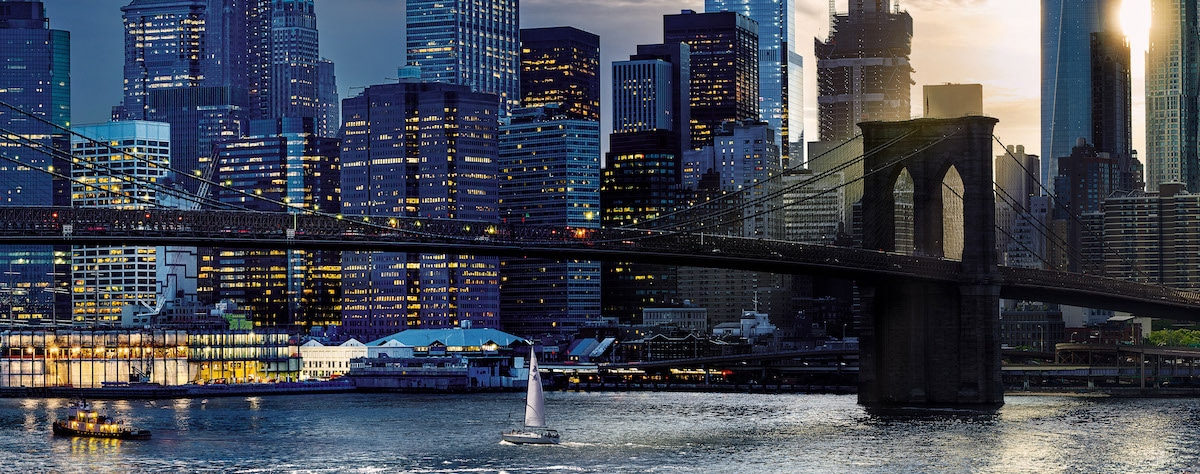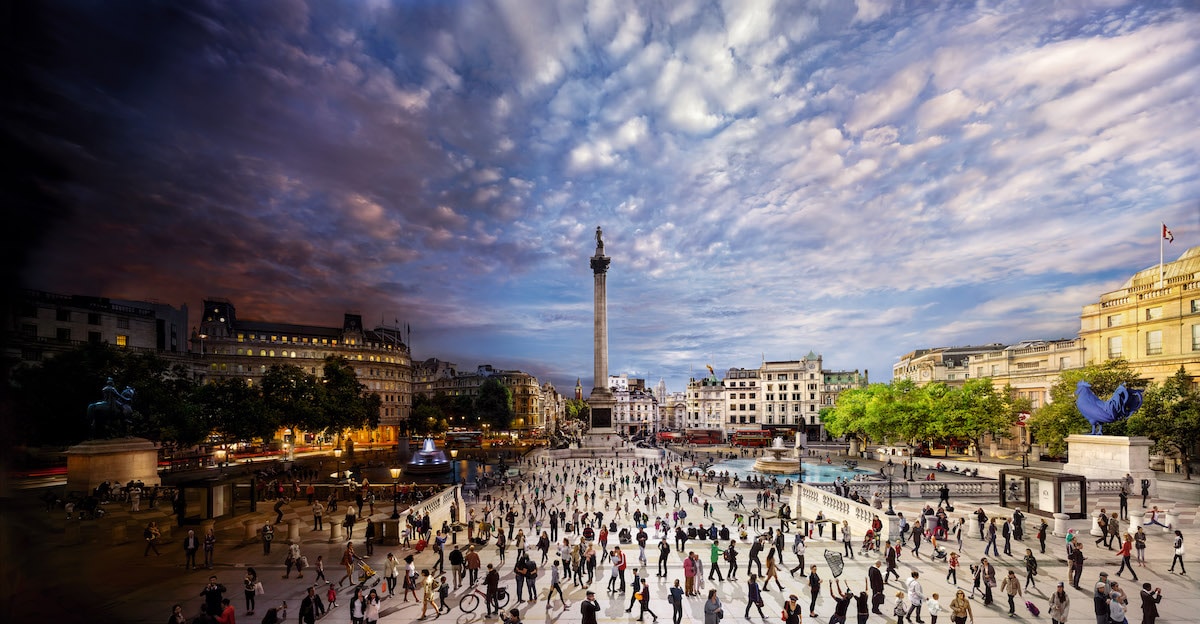스테판 윌크스,"낮부터 밤까지" 세상을 사로잡는데 10년을 소비하다 Interview: Stephen Wilkes Spends 10 Years Capturing the World from “Day to Night”
Interview: Stephen Wilkes Spends 10 Years Capturing the World from “Day to Night”
By Jessica Stewart on August 22, 2019
This post may contain affiliate links. If you make a purchase, My Modern Met may earn an affiliate commission. Please read our disclosure for more info.
Wilkes battled the elements of an inclement Paris in an 18-hour shoot of the Jardins du Trocadéro and Eiffel Tower from a 40-foot lift truck, 2014. (Photo: © 2019 Stephen Wilkes)Jardins du Trocadéro and Eiffel Tower
스테판 윌크스,"낮부터 밤까지" 세상을 사로잡는데 10년을 소비하다 10년 동안 사진작가 스티븐 윌크스는 몇 시간, 며칠 동안 계속해서 장소를 촬영하는 서사시 프로젝트에 착수했다. 최종 결과는 날이 진행됨에 따라 특정 장소의 시각적 변화를 세세하게 묘사하여 빛을 어둠으로 바꾸는 놀라운 사진 구성을 보여주고 있다. 뉴욕에서 시작된 Wilkes's Day to Night 시리즈는 전세계와 도시 환경 밖으로 퍼져나가 지구의 위대한 공간의 놀라운 사진 촬영 타임캡슐이 되었다. 18시간 동안의 촬영에서 파리의 악천후와 싸우든, 아니면 살벌한 철새들을 쫓든, 윌크스의 작품에 대한 집념과 열정은 마지막 사진에서 빛을 발한다. 타스첸이 발행한 《Day to Night》는 윌크스의 인상적인 오우브레를 모아 만든 새로운 출판물이다. 브룩클린 다리에서 세렌게티까지, 이 책은 우리의 세계를 특별하게 만드는 장소와 사건들을 전 세계적인 여행이다. 윌크스는 이 작품으로 관객들을 초대하여 각 장면의 풍부한 디테일에 시선을 늦추고 술을 마시게 한다. 베니스의 레가타 스토리카와 같은 모미트들은 이 이태리 도시를 역사에서 뿌리내리는 데 도움이 되는 경연과 전통을 보여주며, 다른 장면들은 시청자들이 자연 세계의 강점에 경탄하도록 한다. 각각의 사진들은 세밀함이 풍부하며, 이 책은 시청자들이 윌크스가 경험한 그 장면을 경험하기 위해 구성의 구석구석을 탐험할 수 있게 한다. 황기철 콘페이퍼 에디터 큐레이터 Ki Chul Hwang, conpaper editor, curator |
edited by kcontents
Wilkes battled the elements of an inclement Paris in an 18-hour shoot of the Jardins du Trocadéro and Eiffel Tower from a 40-foot lift truck, 2014. (Photo: © 2019 Stephen Wilkes)
Over the course of ten years, photographer Stephen Wilkes has embarked on an epic project that has led him to photographing locations for hours—and days—on end. The end results are striking photographic compositions that detail the visual changes of a specific place as the day progresses, turning light into darkness. Originating in New York, Wilkes’ Day to Night series has spread across the world and out of the urban environment to become incredible photographic time capsules of Earth’s great spaces.
Whether battling inclement weather in Paris during an 18-hour shoot or chasing skittish migratory birds, Wilkes’ tenacity and passion for his work shine through in the final photographs. Published by Taschen, Day to Night is a new publication that pulls together Wilkes’ impressive oeuvre. From the Brooklyn Bridge to the Serengeti, the book is a global tour of the places and events that make our world special.
With this work, Wilkes invites spectators to slow their gaze and drink in the rich detail of each scene. Moments like the Regata Storica in Venice show the pageantry and tradition that helps root this Italian city in its history, while other scenes allow viewers to marvel at the strength of the natural world. Each photograph is rich with detail, and the book lets viewers explore every inch of the composition in order to experience the scene as Wilkes experienced it.
You can now pick up a copy of Day to Night. And in celebration of the publication, Wilkes will show work from the book and new images at Bryce Wolkowitz Gallery in New York. His solo exhibition A Witness to Change will run from September 12, 2019 to October 26, 2019.
My Modern Met had a chance to speak with Wilkes about his work, including how the technology has evolved and how his mission has changed over the course of ten years. Read on for excerpts from our chat.
Brooklyn Bridge Park, 2016. (Photo: © 2019 Stephen Wilkes)
On how Day to Night changed him:
I think I’ve gone deeper into all the various themes that I love photographically so I think I’ve grown as an observer. I think it’s taught me things. I really feel that it has informed me in a very deep, meaningful way because I think that I have always been curious and I love looking and I love seeing.
The idea of looking and seeing nowadays is becoming an endangered human experience, but I find when I do this work that it is the antithesis. It’s constant connectivity that we are all drawn into now, this addiction that we all have to our iPhone and social media. But what I find when I do these pictures is that I get to just look. And in a way, when you have that depth of time to look at something, just study a single place the way I do, it just affects you on a deep level. You begin to see narratives in everything.

Brooklyn Bridge Park, 2016 (detail). (Photo: © 2019 Stephen Wilkes)
On how technology has changed his work:
When I started taking photographs 10 years ago, the largest megapixel large format camera could only shoot, I believe, a one-minute time exposure so you couldn’t even do night photography. Shooting an hour exposure of moonlight or anything like that was out of the question. It was a 50 megapixel back. So my first Day to Nights were shot with a 50-megapixel back. My last Day to Night, which I just did, was shot with 150 megapixels. So it’s tripled. Image quality has tripled within 10 years. And with that, there’s exponential image quality.
My passion in creating imagery has always been about the way I see, and I want to sort of create images that really take you into how I see and what it really looks like—physically the way the human eye sees. Inherently, the way we see an image and the history of photography has always been defined by a format. It could be 35mm, two and a quarter, 4×5, 8×10—that defines where the frame is. You have a lens and then the frame has to fit within whatever that lens projects onto that frame.
What I think is so exciting about the medium right now, and the change I’ve witnessed over this last 10 years since I started doing this, is that I am no longer defined by a frame. I create the frame based on what I see. I’m exploring the way the human eye works and how we see the world in terms of peripheral vision, in terms of the way we see scale. These are things that this technology has allowed me to dive into.

A couple embraces amid the flux of pedestrians in London’s Trafalgar Square, 2013. (Photo: © 2019 Stephen Wilkes)
On the experience he likes to give the viewer:
I’m trying to create a visceral experience in my photographs. I want you to almost feel like you’re looking through a window, and I think that’s where the medium is going. I think technology has increased. It’s like if, as a writer, you’d never heard of a thesaurus. If somebody gave you one, you’d be like “Wow, this is great. I have all these other words I can now work with to describe things.” That’s the way I feel about megapixels. I feel like each time we gain more detail, more information. I feel that becomes more potential for additional stories. Things that were insignificant suddenly become significant in my photographs and those details become powerful new ways to reward a viewer when you stand in front of a very large print.
Grand Canyon by Stephen Wilkes
The Grand Canyon’s popular South Rim as seen from the 70-foot-high Desert View Watchtower. Arizona, 2015. (Photo: © 2019 Stephen Wilkes)
View Full Text
https://mymodernmet.com/stephen-wilkes-day-to-night-book










